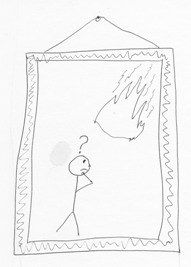 When firefighters arrive at a fire, they face a problem — the fire. In most cases they are directed to suppress it, but unless the fire is very small the best tactics and strategy may not be immediately obvious. You could “cowboy up”, aggressively and directly attacking the perimeter of the fire, but that is not always the best choice. A seasoned firefighter and leader may choose to step back and look at alternatives.
When firefighters arrive at a fire, they face a problem — the fire. In most cases they are directed to suppress it, but unless the fire is very small the best tactics and strategy may not be immediately obvious. You could “cowboy up”, aggressively and directly attacking the perimeter of the fire, but that is not always the best choice. A seasoned firefighter and leader may choose to step back and look at alternatives.
Marc Rounsaville, the former Deputy Director of Fire and Aviation for the U.S. Forest Service in Washington, and a former Area Commander, recently posted an article on his web site about framing the problem BEFORE you attempt to solve it. Here is an excerpt, reproduced here with Chief Rounsaville’s permission:
…My incident management experience frequently had me in the role of listening for the problem frame and asking the questions to ensure we weren’t missing some critical aspect of the problem. Emergency responders are trained to respond, to have a bias for action. It is easy to jump in and start doing before you figure out what to do. Many wildland fire units have a default setting of going “direct” on a fire. This means get as close as you can and keep the fire as small as possible by working right on the edge. The problem frame is simply, “Keep the fire as small as possible.” This doesn’t leave many options. Now, think about opening the frame a bit to, “Keep the fire as small as possible while maintaining the highest degree of safety.” If actually applied this requires some level of analysis for risk and safety. A different range of alternatives begin to emerge.
Opening the frame a little wider to, “Provide for a high level of safety and keep the fire as small as possible using the best natural control features.” Again, an even wider range of possible solutions emerge as well as the requirement to think a little more deeply about the situation. This thinking or reflecting will most likely bring more ideas to the surface. This new ideas may not have ever emerged had the responders focused strictly on physically doing something.
Robert Baird will be the new of Deputy Director of Fire and Aviation Management for the U.S. Forest Service.

Who has the copywrite on the picture, RAND? If a person has ever been the incident commander on even the smallest of evolving fires you understand the PRESSURE to keep personnel and the public safe while thinking out (the plan) of suppression or management action. The public and media is in your face to do something! How many air tankers are coming and when will they arrive, most frequently asked question by the press. (establish a FIO immediately) send the “herd” in that direction. Outside California the answer will probably be maybe the next decade, we are studying the need and type of aircraft.
Copyright of the photo? Umm, no it’s not the Rand Corp. It was was done by the Artist in Residence at Wildfire Today. Signed and numbered copies will be available for sale in our gift shop in the lobby.
As VFD member and a contract wildland firefighter I know that part of your sizeup life safety is #1. Any plan of action should take this in consideration.